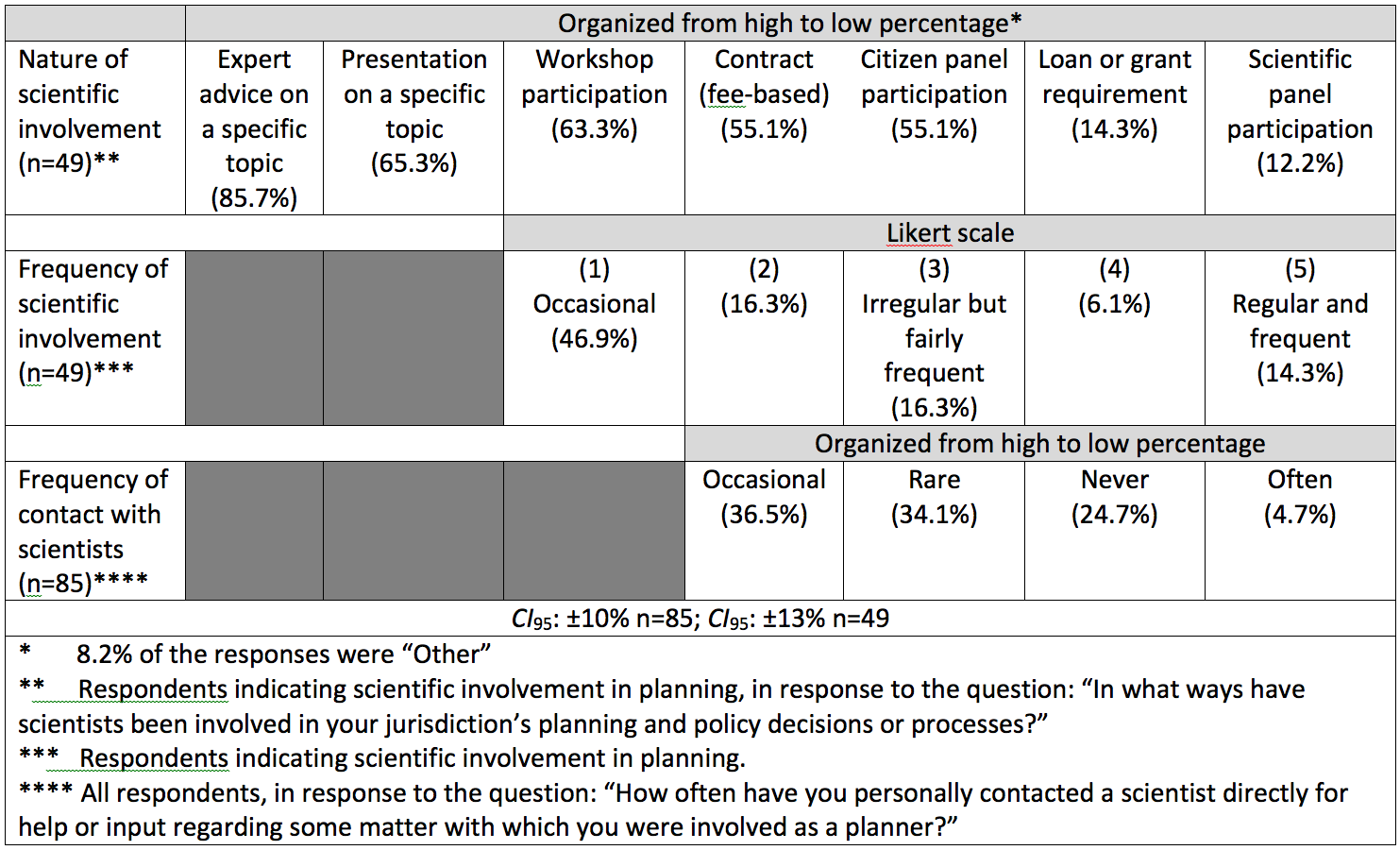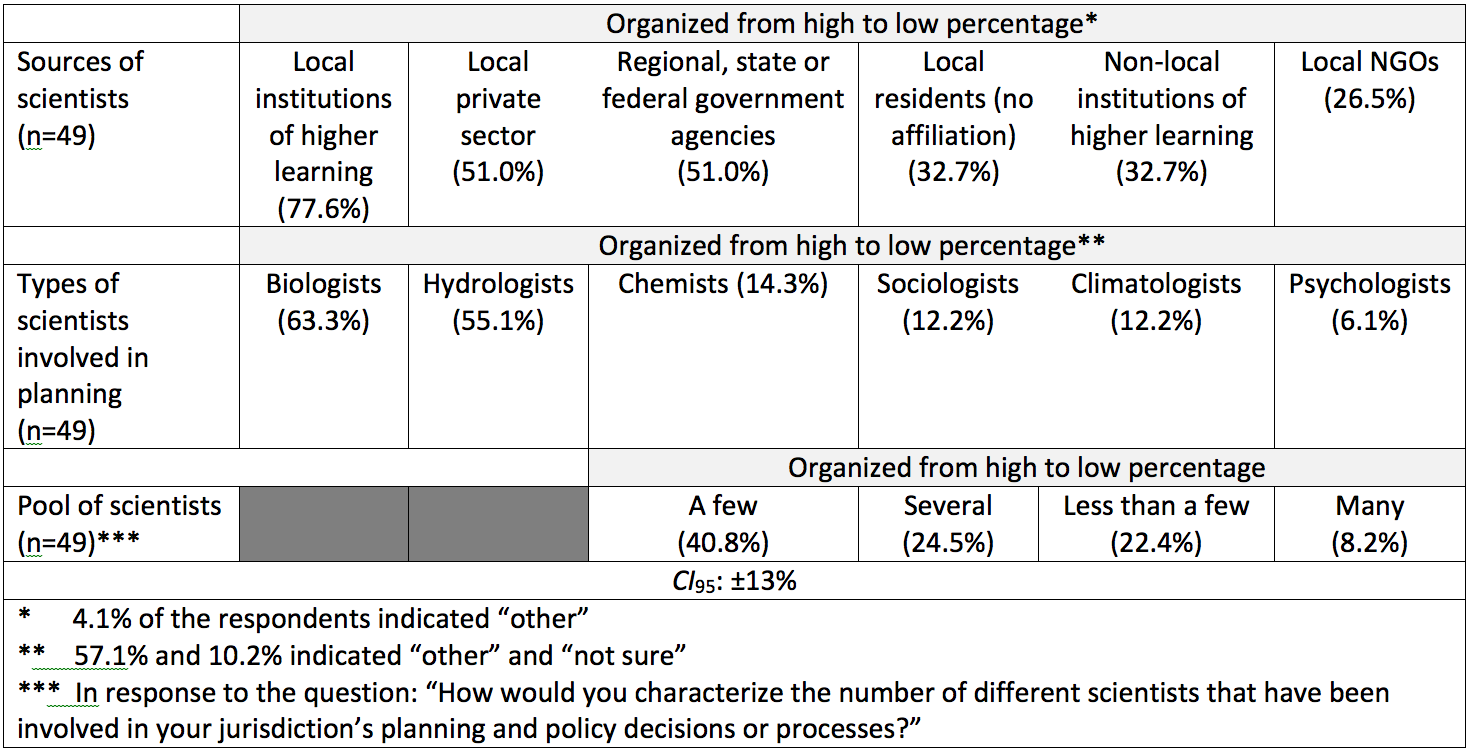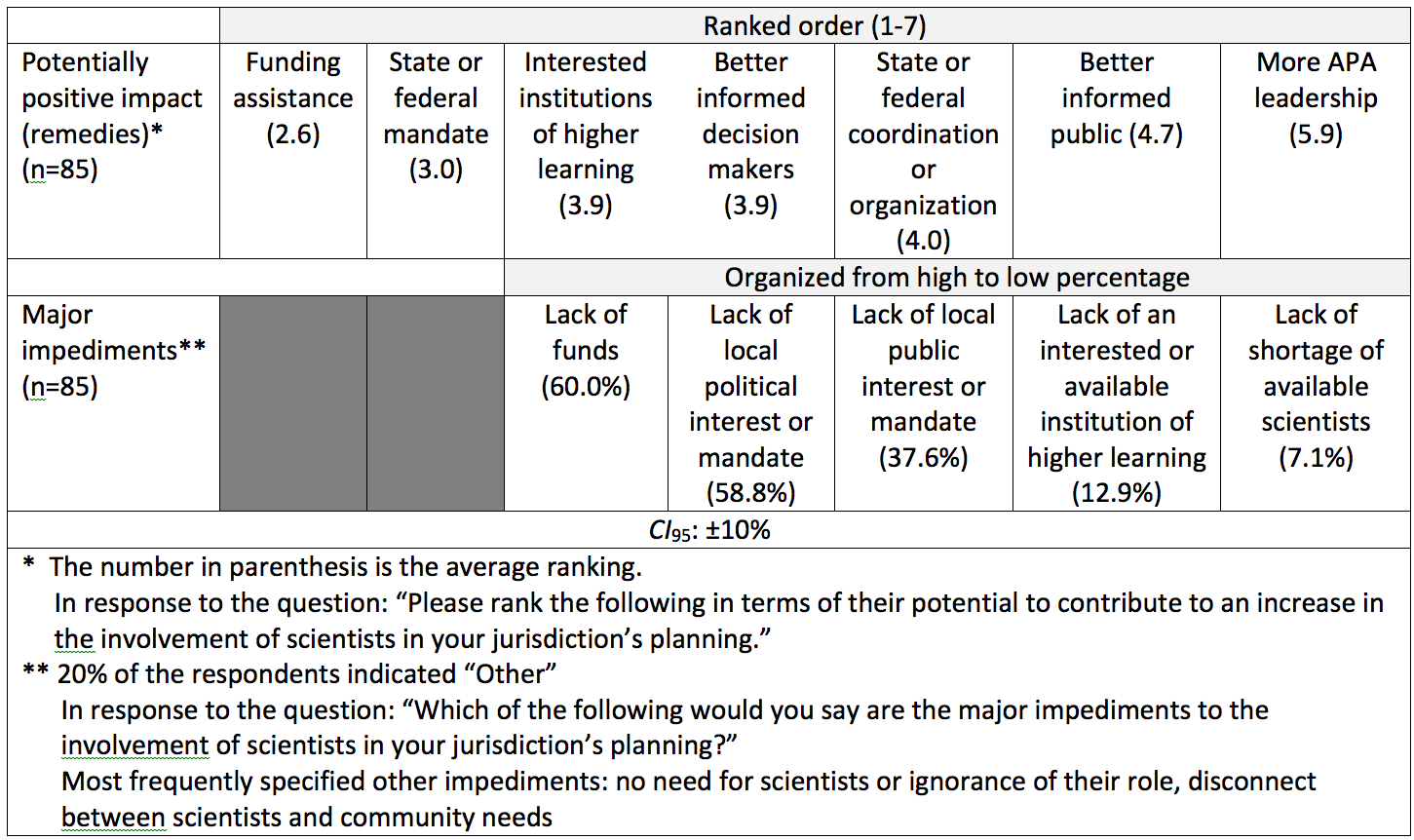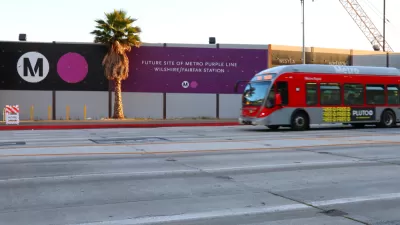A survey of planning offices in the United States reveals an important dynamic of professional practice.

The planning profession places high value on the importance of evidence and scientific information in relation to public decision making, planning, and planning projects (di Castri and Hadley, 1986; Krizek et al., 2009; Rydin, 2007). Additionally, the emerging field of sustainability science sets goals for the institutional integration of science and public policy, with a particular emphasis on local development (Jepson 2012).
The objective of this paper is to shed some light on the extent to which planning is contributing to the application of science in local decision making. That is: Are planning offices actively attempting to engage scientists in local planning? Is the form of that engagement likely to help achieve the goal of integrating science and public policy at the institutional level?
A search of the planning and development literature revealed no studies about the involvement of scientists in planning processes. To assess the level and nature of such involvement, I conducted a survey of 421 planning offices in the United States that were associated with counties and municipalities with more than 100,000 people; this represents about 50 percent of the approximately 835 jurisdictions in that size range. The planning office websites were identified through a Google search. In early January 2016, I sent an email message to the directors of the identified planning offices inviting them to participate in a survey about "planning and science." A total of 119 offices accepted the invitation, and I distributed the surveys through Survey Monkey. In the end, 96 surveys were returned, of which 85 (20.2 percent) were completed and usable for analysis. This response rate corresponds to a confidence interval (CI) of ±10 percent at a 95 percent confidence level.
The survey respondents tended to be experienced practitioners: 75.3 percent were directors or chief planners and 61.2 percent had been employed at the office for more than ten years. A large majority (88.2 percent) of the offices performed the full range of regulatory and advisory planning functions and more than half (57.6%) responded that scientists have been involved in their jurisdiction's planning. Using the Census Bureau's regional delineations, 13 percent of the respondents were from the Northeast and the West, 35.2 percent from the South and 34.1 percent from the Midwest.
One of the questions on the survey asked respondents to use a Likert scale to indicate the importance of scientific involvement in their planning efforts. As shown in Table 1, a majority of the respondents indicate that scientists have been involved in local planning activities and, as shown in Table 2, that the largest number of respondents viewed the effect of that involvement as moderate. (For example, at this level of confidence, the percentage of respondents who indicated "not very" in Table 2 would have a have a range of 7.4% to 9.0% (i.e., 8.2-(8.2*.10) to 8.2+(8.2*.10). Note also that the response range for the 49 respondents who indicate the involvement of scientists in their planning increases to ±13%.)
TABLE 1 – The involvement of scientists in local planning

TABLE 2 – The importance of scientific involvement to planning

Table 3 shows findings related to the frequency and nature of scientific activity and involvement in planning. The profile that emerges is of scientists being contacted and occasionally involved in planning activities. While advice giving is, by a large margin, the predominant form of involvement, there is also significant institutional involvement in the form of workshop and citizen panel participation.
TABLE 3 – Frequency and nature of scientific contact and involvement

Table 4 shows that local institutions are the major source of scientists involved in planning processes, although local businesses and regional, state, and federal governmental agencies are also important sources. Table 4 also shows that the bulk of the scientists involved in local planning are from disciplines relating to land and water and that a majority of the respondents rely on a small pool of "a few" or "less than a few" scientists.
TABLE 4 – Sources, types and pools of scientists, among respondents who indicated scientific involvement in planning

All of the respondents were asked to give their assessment of the impediments to scientific involvement in planning and to identify factors that might positively impact the level of such involvement. As shown in Table 5, the two impediments ranked the highest are 1) lack of funds and 2) lack of local political interest or mandate. The two remedies most often cited are 1) funding assistance and 2) a state or federal mandate. Also noteworthy is the ranking of lack of local political interest or mandate as the second most significant impediment to increasing scientific involvement in planning.
Table 5 – Impediments and remedies related to scientific involvement in planning

A number of conclusions can be drawn from these results:
- Scientists are actively involved in local planning activities.
- Planning offices play a leadership role in recruiting scientists for involvement in local planning.
- There is little evidence that scientists are being integrated systemically into the organizational structure of planning and governance. Rather, their involvement can be best characterized asad hoc, that is, occurring under specific conditions and in relation to specific issues.
- Scientific involvement in planning is limited primarily by a lack or shortage of funding and local political interest.
- State and federal funding and mandates will contribute most to increasing and amplifying the involvement of scientists in local planning activities.
To the two questions posed at the beginning of this paper, then, the answers seem to be: YES, planning offices are actively engaging scientists in local planning, and NO, due primarily to financial and political constraints, the form of that engagement is unlikely to significantly contribute to the institutional integration of science and public policy.
Edward J. Jepson, Jr. received his PhD in urban and regional planning from the University of Wisconsin-Madison. He now teaches online courses for several universities in the U.S., including the University of Oregon and the California State Polytechnic University, Pomona.
References
di Castri, F. & Hadley, M. (1986). Enhancing the credibility of ecology: Is interdisciplinary research for land use planning useful? GeoJournal 13(4), 299-325.
Jepson, E. J. (2012) Sustainability science: A new paradigm for planning? Planetizen.
Krizek, K., Forsyth, A. and Slotterback, C. Schively. (2009) Is there a role for evidence-based practice in urban planning and policy? Planning Theory and Practice 10 (4): pp. 459-478.
Rydin, Y. (2007) Re-examining the role of knowledge within planning theory. Planning Theory 6 (1): pp. 52-68.

Planetizen Federal Action Tracker
A weekly monitor of how Trump’s orders and actions are impacting planners and planning in America.

Maui's Vacation Rental Debate Turns Ugly
Verbal attacks, misinformation campaigns and fistfights plague a high-stakes debate to convert thousands of vacation rentals into long-term housing.

San Francisco Suspends Traffic Calming Amidst Record Deaths
Citing “a challenging fiscal landscape,” the city will cease the program on the heels of 42 traffic deaths, including 24 pedestrians.

Amtrak Rolls Out New Orleans to Alabama “Mardi Gras” Train
The new service will operate morning and evening departures between Mobile and New Orleans.

The Subversive Car-Free Guide to Trump's Great American Road Trip
Car-free ways to access Chicagoland’s best tourist attractions.

San Antonio and Austin are Fusing Into one Massive Megaregion
The region spanning the two central Texas cities is growing fast, posing challenges for local infrastructure and water supplies.
Urban Design for Planners 1: Software Tools
This six-course series explores essential urban design concepts using open source software and equips planners with the tools they need to participate fully in the urban design process.
Planning for Universal Design
Learn the tools for implementing Universal Design in planning regulations.
Heyer Gruel & Associates PA
JM Goldson LLC
Custer County Colorado
City of Camden Redevelopment Agency
City of Astoria
Transportation Research & Education Center (TREC) at Portland State University
Jefferson Parish Government
Camden Redevelopment Agency
City of Claremont





























